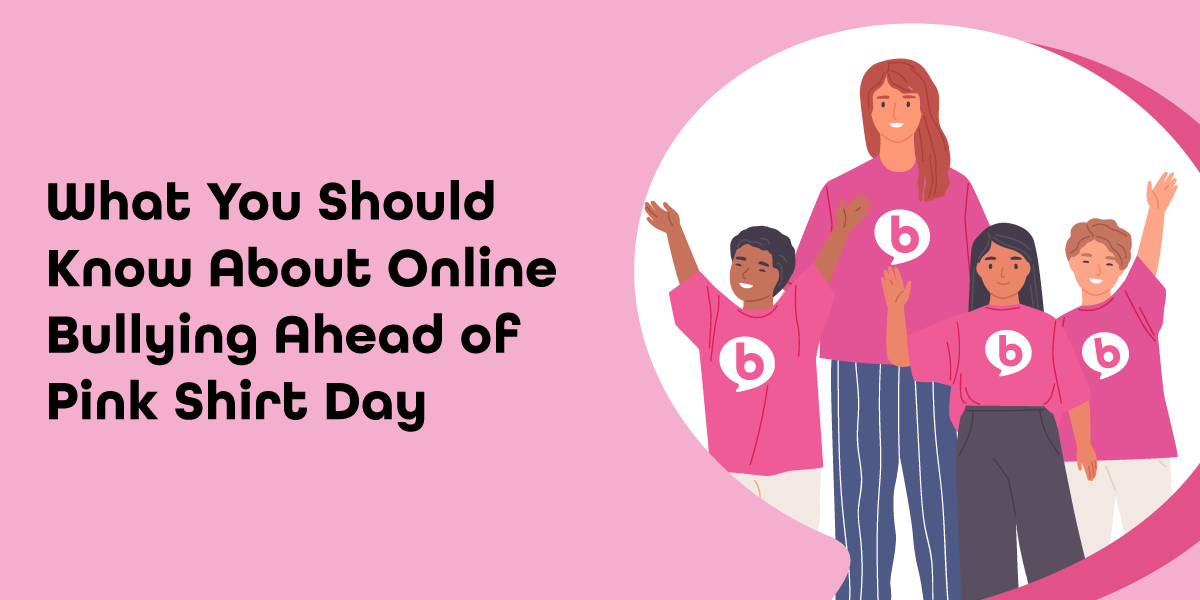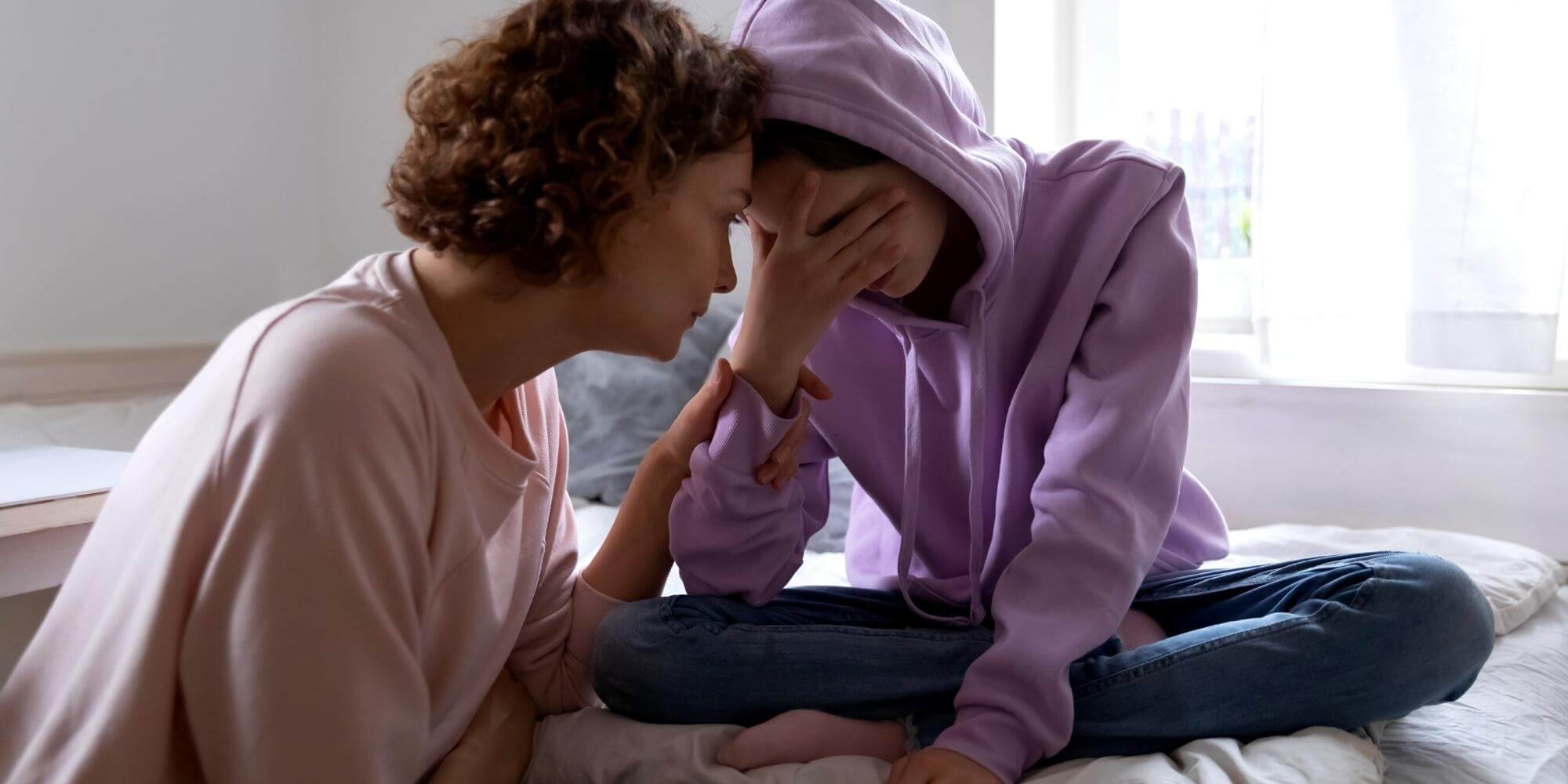What You Should Know About Online Bullying Ahead of Pink Shirt Day

Did you know that Pink Shirt Day originated in Canada? Our observation of Pink Shirt Day began in 2007 in Halifax, Nova Scotia, when two grade 12 students took a stand in support of a younger student who was being bullied for wearing a pink shirt.
The pair convinced 850 of their school’s approximately 1,000 students to wear pink shirts in solidarity with the victim — and a movement was born. By 2012, the United Nations declared an international anti-bullying day, and pink shirts have become known around the world as an anti-bullying symbol.
A growing number of children, teens, and adults experience bullying on a regular basis. And bullying doesn’t just happen in person — it can also take place online, where it can be harder to prevent and detect.
We are not experts in cyberbullying, but as an internet provider, we want to bring awareness to the dangers of cyberbullying and provide resources for support services. On this Pink Shirt Day, we stand with our customers to make the internet a safe place for everyone.
Resources
Kids Help Phone 1-800-668-6868
Kids Help Phone is Canada’s only 24/7 e-mental health service offering free, confidential support to young people in English and French.
Fraser Health Crisis Line 604-951-8855
The Crisis Line provides immediate, free, and confidential emotional support, crisis intervention and community resource information to people of all ages, 24 hours a day — everyday.
CyberTip
Canada’s National tipline for reporting online child sexual abuse and exploitation.
Government of Canada Cyberbullying Resources

What is Cyberbullying?
Online bullying, or cyberbullying is harassment or abuse that occurs on computers, phones, or other connected devices. It can range from hurtful teasing to life-threatening abuse or threats. It may seem like mean or hateful comments online don’t need to be taken as seriously as physical actions causing harm, but cyberbullying is every bit as serious as its in-person cousin — but it does leave a digital footprint behind that we can use to help stop the abuse.
Pink Shirt Day Fact: Instagram has the highest rates of reported cyberbullying among young people — 42% say they’ve been harassed on the app.
- Spreading rumors online
- Posting embarrassing pictures of videos on social media
- Texting hurtful or threatening messages
- Socially excluding people online
- Creating fake accounts to send harmful content while pretending to be someone else
Not sure if something is just a joke or actual bullying? Consider whether people are laughing at the target or with them. If the victim isn’t laughing along, you’re probably a witness to bullying.
How Can You Help Prevent Online Bullying?
Taking proactive steps against online bullying doesn’t guarantee that you or your child won’t experience it at some point. But it dramatically reduces the likelihood that you or your family will be guilty of it yourselves. And you’ll know what to do if you see it.
Pink Shirt Day Fact: Cyberbullying is the online student safety issue that concerns teachers the most.
Open the Conversation
Cyberbullying thrives when people can’t recognize or understand it. Talk to your family about cyberbullying. Have they seen it? Experienced it? Do they understand what it is? Make conversations with kids age-appropriate. For example, your 5-year-old needs to understand that lies and mean names are just as wrong online as they are on the playground. Your teen, on the other hand, may need guidelines around personal or sensitive content.
Get Involved
Check out social media or gaming sites where your kids hang out. Consider signing up yourself, with an agreement that you are only there to observe, not post for teens who don’t want parents messing up their feed.
There are a number of tools out there that can help you monitor online sites to and check what your reputation is like online. Set up Google Alerts, Social Mention, or BuzzSumo to notify when your name (or your child’s name) is mentioned on social sites.
Practice Online Safety
No one in your family should be loaning out their personal devices or sharing passwords that would give users access to private accounts. Make use of privacy settings to limit post audiences, and use location-sharing applications with caution.

Is Your Child Being Bullied Online?
- Have they suddenly stopped using their device, or changed how they use it?
- Do they resist going to school or other regular activities?
- Do they appear to be uncomfortable when using an online device?
- Are they suddenly clingy or avoiding friends?
- Are they secretive about what they do/have been doing online?
Pink Shirt Day Fact: Around one-third of youth between 12 and 17 say they’ve been bullied online. 30% say it’s happened more than once.
What to do If You Experience Cyberbullying
A good rule of thumb for online citizens of any age is “Don’t Respond, Report.” Don’t engage with cyberbullies or respond to their messages. Instead, report them immediately to platform administrators, as they’re most likely in violation of the terms of service. Reporting may also take the form of getting in touch with a teacher or even contacting the police.
Save evidence and document all instances of online harassment or abuse, in case you need to demonstrate what you’ve experienced later. Remember that the victim is not to blame for any type of bullying — and if your child is a bully’s target, make it clear that you know it’s not their fault.
How to Show Your Support on Pink Shirt Day
Working together, we can help end bullying and show our support for victims of all ages. This February 23, get out your pink shirt, donate to the cause or spend some time talking to your family about how to be a better online citizen.
